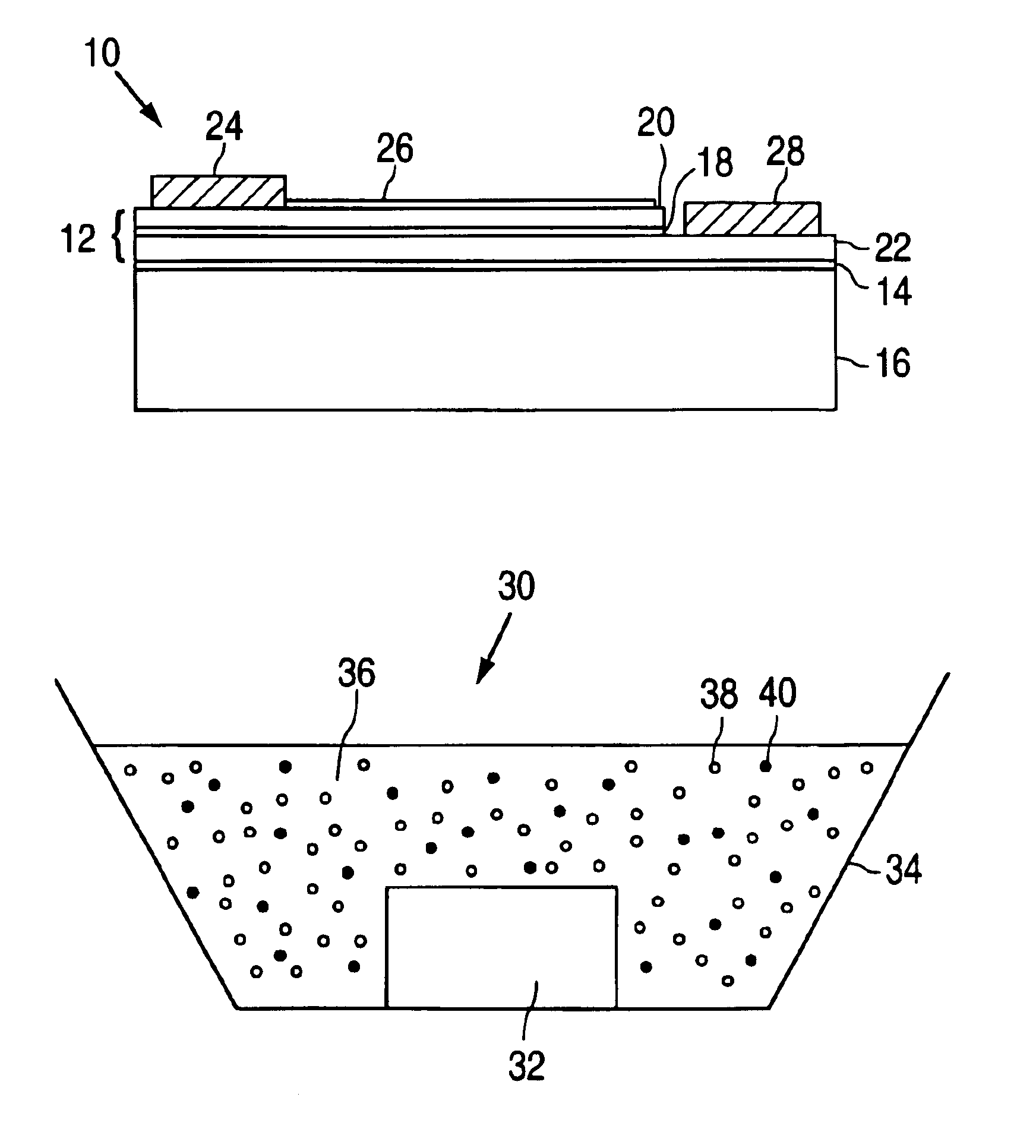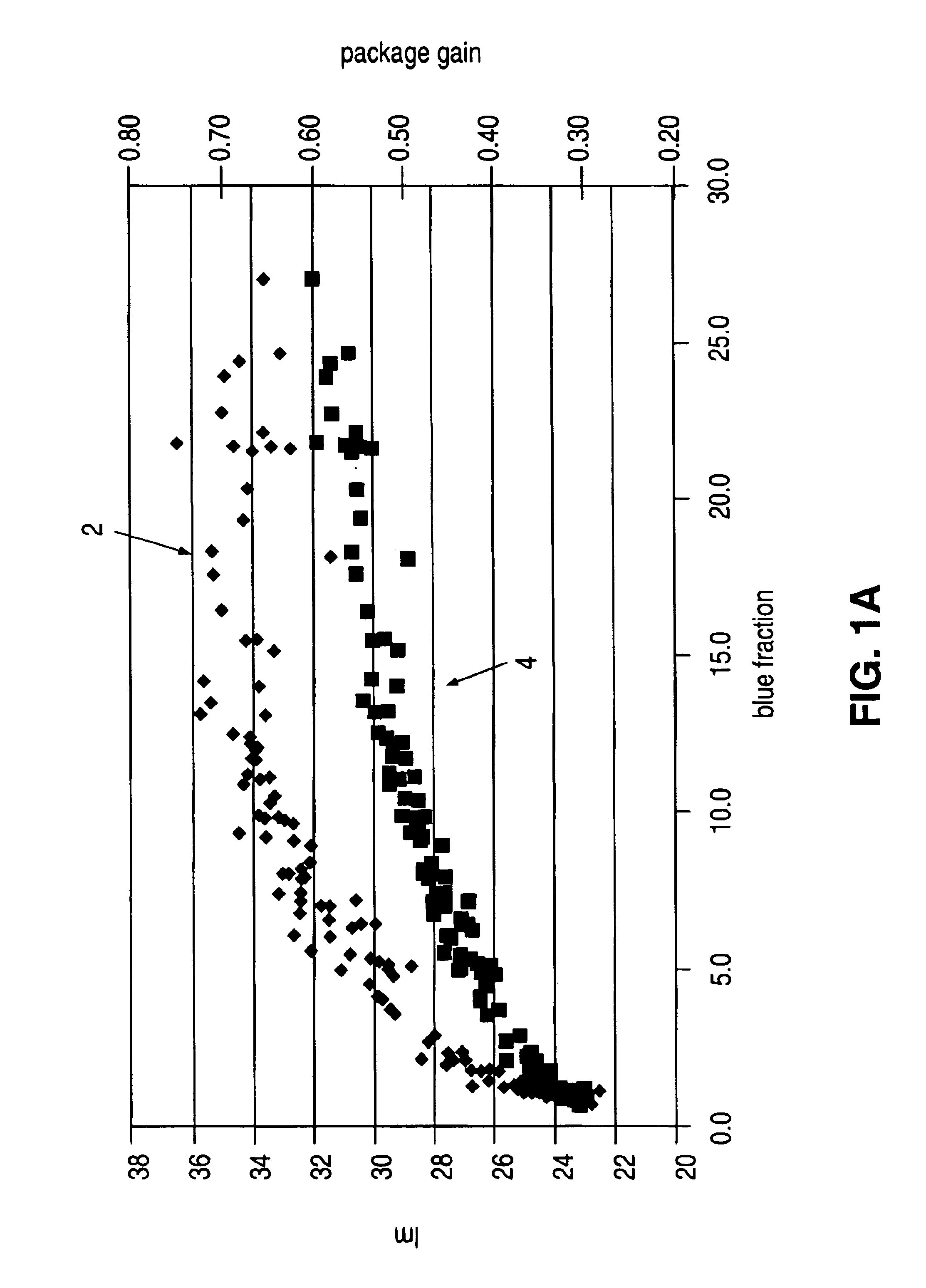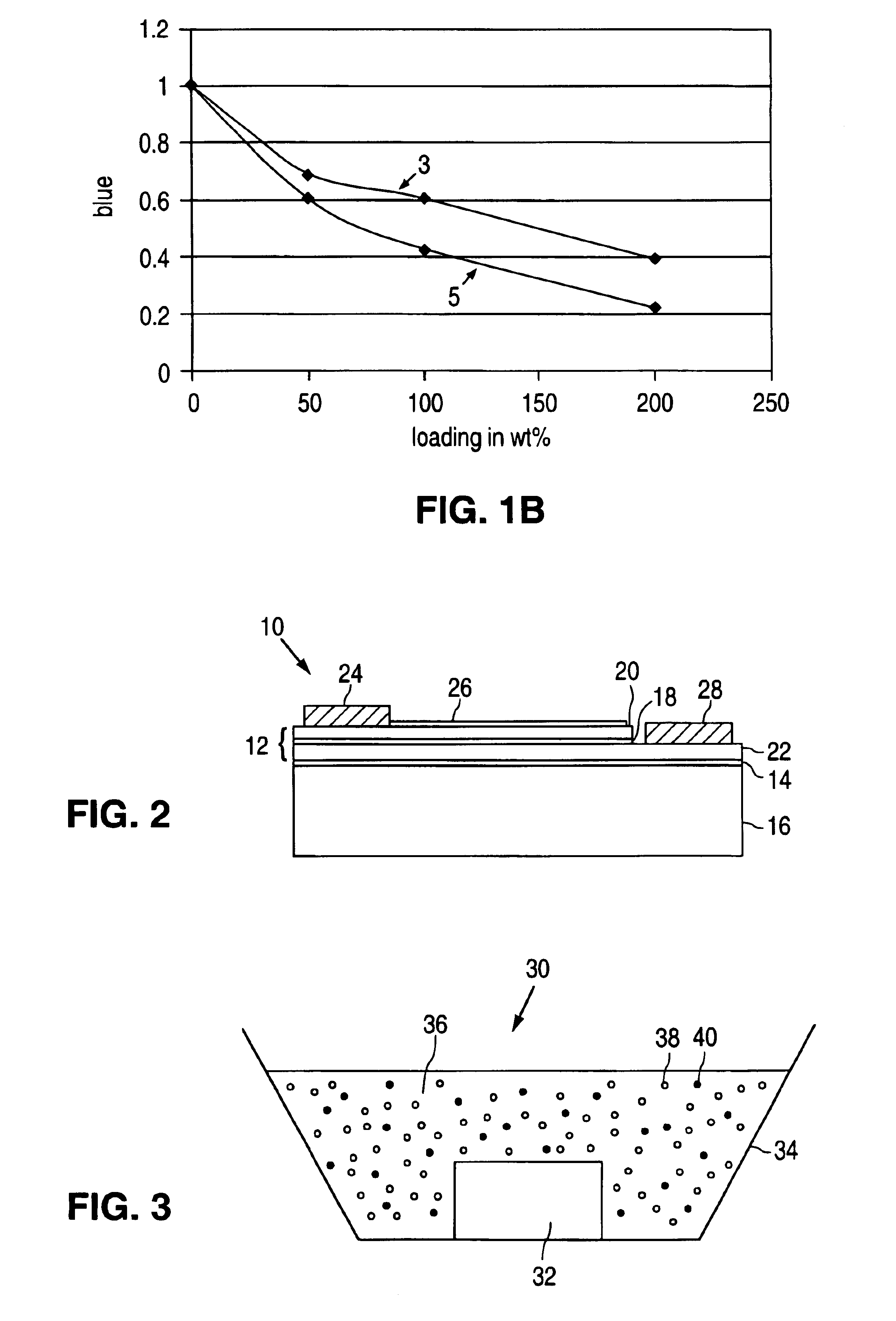Light-emitting devices utilizing nanoparticles
a technology of light-emitting devices and nanoparticles, which is applied in the direction of discharge tubes/lamp details, discharge tubes luminescnet screens, electric discharge lamps, etc., can solve the problems of unsatisfactory applications requiring efficient generation of light at particular wavelengths, the efficiency with which light may be extracted from such devices is reduced, and the loss due to total internal reflection increases rapidly. , to achieve the effect of reducing light scattering, increasing light extraction, and increasing light extraction
- Summary
- Abstract
- Description
- Claims
- Application Information
AI Technical Summary
Benefits of technology
Problems solved by technology
Method used
Image
Examples
Embodiment Construction
Several embodiments of light-emitting devices are disclosed in which nanoparticles are used in combination with light-emitting semiconductor devices. As used herein, “nanoparticle” refers to a particle having a diameter (or similar cross-sectional dimension) typically much less than about one micron. Such nanoparticles may be of any shape and may comprise, for example, crystalline or amorphous solids or liquids.
The inventors have discovered that the efficiency of conventional phosphor-converted light-emitting devices is significantly decreased by scattering by the phosphor particles of both the primary emission from the semiconductor device and the secondary emission from the phosphor particles. A portion of the light scattered by the phosphor particles is scattered onto absorbing parts of the semiconductor device or its package and thereby lost.
Such scattering by the phosphor particles occurs because they are typically substantially larger than the wavelengths of the primary and se...
PUM
 Login to View More
Login to View More Abstract
Description
Claims
Application Information
 Login to View More
Login to View More - R&D
- Intellectual Property
- Life Sciences
- Materials
- Tech Scout
- Unparalleled Data Quality
- Higher Quality Content
- 60% Fewer Hallucinations
Browse by: Latest US Patents, China's latest patents, Technical Efficacy Thesaurus, Application Domain, Technology Topic, Popular Technical Reports.
© 2025 PatSnap. All rights reserved.Legal|Privacy policy|Modern Slavery Act Transparency Statement|Sitemap|About US| Contact US: help@patsnap.com



